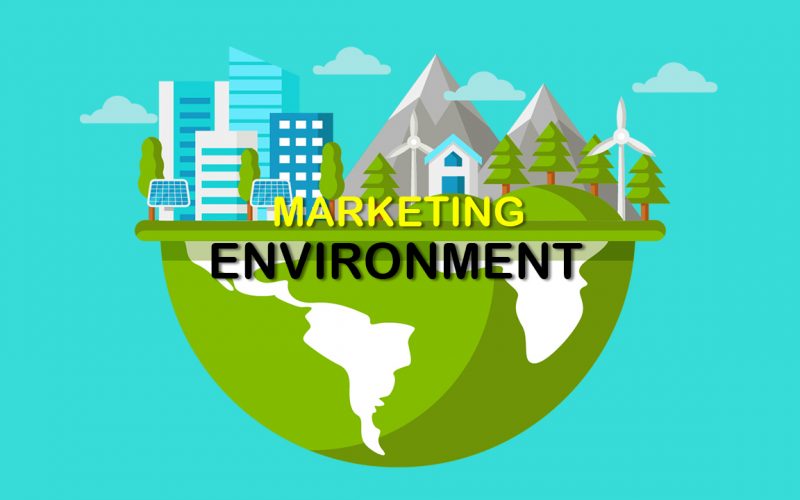What Are The 5 C’s of Marketing? How to do a 5 C’s Marketing Analysis?
5 Marketing includes businesses, clients, rivals, staff, and the environment. It fits the scenario analysis process, which allows you to address certain queries. Like what aspects of the industry, you can work on your business and think about its strengths and disadvantages.
In addition to swot reviews, marketing professionals use 5 C’s of Marketing to make their marketing campaigns and in their decision-making. It is also advertisers’ marketing strategy to adjust their 5c yearly or every six months. It highlights the value of marketing research for the 5 C’s.
This article will walk you through the definition and how to do 5 C’s of Marketing analysis.

What are the 5 C’s of marketing?
The 5 C’s of marketing are a widely employed methodology in condition research to support advertisers make better business choices. The “5 C’s” reflect Company, Customers, Competitors, Collaborators, and Climate. In brief, a 5C review can allow you to determine the business’ most critical variables. This is equivalent to the wellness audit for your company - you will make more educated, more efficient choices by reflecting on your business’s most critical facets by deciding what is going well and what is not.
Due to their reliability and simplicity, 5c analysis is one of the most common scenario analysis models and an excellent option for SMEs. We suggest you perform a 5c report at least once a year - it does not take long to keep you up to date on your company’s leading and most relevant facets.
The 5c study is part of a family of model analyzes. There are different approaches to evaluate a marketing scenario - you may recognize the SWOT (Strengths, Vulnerabilities, Opportunities, Threats) models, which are simple yet successful. Today, we discuss another method for scenario research that goes into greater specifics than the SWOT paradigm – the 5 C’s of marketing. We can break down what this model involves, how one can be used on your own online company, and see an illustration of 5c research.
The great thing about incorporating the 5 C’s into your marketing campaign is that this is not a dry, artistic study. Instead, it lets you gain strong visibility into main areas of strength and understands how to develop a strategic edge similar to other industry leaders. It may also help you refine your primary KPIs by designing and introducing new marketing techniques.
Time to glance at the first C.
The first C: Company

Why we begin with “business” when we go deep into the 5 C’s of marketing? And we still think it is necessary to verify yourself. Go ahead, relax slowly and get set to see inside.
Any 5C adherents list “capabilities” among their analytical components. In our opinion, this word is essentially associated with the group “company.”
This is because you can analyze how your company works in this segment, including its:
- Lines with goods and deals.
- You use the marketing blend to put the items.
- You are already utilizing contact networks and others you wish to try.
- Main influencers for marketing actions, including sales, logistics, and customer support staff.
You will note that here we placed a lot of focus on ads. While you will choose to consider considerations like corporate finance, research projects, and product creation, the analysis can concentrate on what you have to offer and how you will communicate this knowledge with your future buyers.
The second C: Customer

That’s false. That’s right. Customers might be second on this chart, but in our hearts, they are fifth.
The second element of your research should be:
- Customer awareness requires.
- Identifying divisions in the market.
- Create methods to communicate with the target market.
Techniques for inspection of the clients vary from systematic polling carried out internally to casual Twitter surveys by a third-party contractor. Only make sure they are interactive, and you pose the correct questions.
Understanding what the clients and potential customers desire and how to meet them more easily is a huge move in improved marketing contact.
The third C: Competitor

The competition follows next in the 5 C’s of marketing analysis as understanding who you are versus is the true key to a good business campaign and policy next to inner harmony and customer-focused thought.
It is possible that your product offerings aren’t exactly special on the market, no matter how good the differentiators are. You may already know who your major competitors are, but keep your mind open and if needed extend your selection.
Then, ensure that you recognize your rivals’ digital marketing channels and hear about their involvement in social media.
The fourth C: Collaborator

Now is the time to see who is in your corner.
Taking a broad look at the staff you are already operating with and discuss the possibilities for untapped relationships. Businesses who are market-aligned with you but are not direct rivals will prove useful collaborators for content production. Seeing forward and back in the supply chain will also be helpful. You would probably have several ways to partner with other businesses with similar goals.
Develop a well-defined relationship strategy focused on the marketing choices.
The fifth C: Climate

If you use the words ‘environment,’ ‘meaning’ or ‘conditions,’ you would probably explore similar definitions here.
The aim is to reach past yourself to achieve a more in-depth view of your whole company’s environment. You have to evaluate the global environment to build an effective strategy that attracts new potential customers while preserving loyal customers.
There are two linked analyzes of the condition that will benefit you:
- SWOT: Strengths, weaknesses, opportunities, and threats.
- PEST: Political, economic, social, and technological.
For eg, how can you react to this threat if you hear that your consumers are already overwhelmed by email in their personal lives?
How to do a 5 C’s marketing analysis?
To do 5 C’s of marketing analysis, in each C process you should ask some questions and by answering all of these questions you may access the useful information to make a good strategy.
Company
Start with questions regarding your own business:
- What’s my business selling? List the most relevant product lines or styles.
- Will our goods differ from the products of our competitors? If so, how? How?
- What is my company’s strategic advantage?
- How exclusive or unforgettable is my brand?
- What’s best for my company than others?
- What’s harder for my company than others?
- How do consumers see my company?
- Where would I invest if I unexpectedly received $10,000 to invest in my business?
- If I wanted to decrease my spending unexpectedly by 10%, where will I make such cuts?
- What are my company’s 1, 3, and 5-year targets?
If you have trouble answering any of these queries, begin with a simplified SWOT review. While not as valuable as a 5c model overall, it will help you get a deeper insight into your business.
It is also necessary to be truthful and front-line throughout this phase, especially about your vulnerabilities and competitions. When you have addressed specific queries, take a minute to remind yourself how you feel regarding these responses. Are there any places you would like to respond differently? If so, make a note of the perfect answer – this is a fantastic way to meet your company’s short-term and long-term objectives.
Customer
One of the most critical aspects of every organization is the consumers who buy the goods. You can become even more successful in providing goods and your consumers want to purchase if you have a good understanding of who they are, what they desire, and how well your product suits their needs (and keep buying). In your marketing endeavors, you would also be well informed - you will not only sell your goods with the best public, but you will also realize what vocabulary and images your future buyers have.
Finally, consumer research is one of the greatest methods of knowledge regarding your brand and industry – you can get a first-hand view at what people want and hate about your goods and businesses. Start the consumer research with the questions below.
You will want to address these questions for each segment if you are addressing different market segments:
- What is the perfect consumer for my products?
- Who’s my goal group?
- Who buys my goods at the moment?
- What kind of items are most/least sold?
- What of my goods have outstanding reviews? Bad reviews? No review? No review?
- What are my clients behaving on my website? What sites do they regularly visit?
- How can my clients locate my website or products?
- Will my total viewership rise or decrease?
- How many repeat orders are done by my clients? How important are repeat shopping for my business model?
- What ads or campaigns in previous driving sales were most effective?
- Were consumer purchases seasonal or trendy?
- Do consumers study carefully before they shop, or do they purchase impulses?
- What motivates my clients to buy? (Price, cost, convenience, specific value product, etc.)
- Where would my client go to find out all about my products?
- What are my contact networks for my customers?
- What consumer reviews channels do I have?
- What is the most popular complaint or concern for customers?
- What is the most popular commendation or constructive feedback?
- What kind of items are more important to my customers? Interesting least?
- If only I could say one thing about my company to my clients, what will it be?
The purpose of these questions is to consider the actions of your clients and their fundamental motives compared to others in the 5 C’s of marketing. If you have issues with this segment, you are not alone – the best and most critical aspect of selling is just remembering the consumer. If you break the puzzle, you get an edge for opponents that’s difficult to beat. Use each form of consumer reviews to enable you to address your questions and revisit your customer study regularly while you learn more or adjust your target audience.
Competitor
Your competitor’s understanding is as critical as your own company understanding. Address the rivals’ following questions:
- What are your immediate competitors?
- Which competitors are my existing ones? What competitors are recent or emerging?
- What do my opponents give me not?
- What are the main qualities of each of my competitors?
- What are the greatest shortcomings of my competitors? (Hint - check your analysis of the product and the company)
- What tactics do my rivals use to draw customers?
- Is there anything my opponents can do I can?
- Can my organization do something that my rivals cannot do?
- What are the target markets of my competitors?
- What content is created by each competitor?
- What is the presence of each rival in social media?
Knowing the general position, abilities and shortcomings of your rival would provide a significant benefit for you - after all, if you do not know who the true competitors are, you cannot fight successfully. You may choose to concentrate on businesses close to your own, but it’s OK if your rivals are larger or more developed than you - while at first, this doesn’t occur, smaller companies have a lot of advantages over bigger companies. Because they’re not regulated by a council or constrained by creditors, small businesses can be far more agile and creative in promotions than just a massive publicity budget.
As Sunt Tzu states, “If you know the enemy and you know yourself, you need not fear the result of a hundred battles.” Instead of finding out vulnerabilities, discrepancies and other possibilities for greater rivals. The trick to a larger player is to concentrate on tiny, achievable wins, and to allow them to aggregate over time.
Collaborator
Name any individual or service your business partners with for activity in this segment. Think about it as a company’s database or phone book, for example, if an order is late for a retailer, you will turn to the collaborating list to find out easily who you have to contact to repair it. Create a list of the primary communication person, their email address, telephone number and all related details for each colleague.
There are few queries and explanations of the workers for which corporations deal more frequently:
- Who manages the company’s regular operations?
- Do I have a partner who helps manage the business?
- Have I any partners or stakeholders?
- Who makes the items I market or stocks them?
- Who is my source of shipping?
- Who is paying my credit card?
- Who gives my e-commerce platform?
- Who oversees my warehouse or inventory operations?
- With whom have I registered my domain?
- Do I have somebody to support me create my website?
- Do I have anybody to compose descriptions of items, documents or other copies to me?
- Do I have someone to help me marketing or advertising?
- Should I work constantly with a photographer?
- Do I have anybody to market or deliver my goods for me?
- Do I have someone who manages my social networking accounts?
- Do I have freelancers or consultants to deal with?
- Is there anybody else I frequently collaborate with?
After you fill out a segment on partners, you would definitely recognize that more people (or services) are required to manage your company than you knew initially. The classification of all the workers will help you monitor who is accountable for what. It also offers you a chance to start whether you are searching for a more profitable or successful company – you may remember that you have a payroll consultant who did not contact you in months. This part may help you the most to strengthen your relationship with partners in the 5 C’s of marketing.
Climate
Concentrate on variables beyond your own company that can influence how you work while looking at the environment. It covers developments in the market, social changes, regulatory trends, and emerging or evolving technology. Press yourself these questions:
- Do current or pending legislation or regulations impact my business? If so, how do I cope with them?
- Are there societal patterns that might influence what people purchase or how people buy them?
- Are there any economic patterns that might influence the behavior of customers?
- Is modern or evolving technologies capable of altering my customers’ behavior or my business?
- What kind of stuff or beliefs were famous or unpopular?
You don’t want to forecast the future with these queries, but you want to get a general idea of where the economy is going. For example, remember how people think or feel and what types of topics are relevant to them when looking at social movements. For eg, if your target group is progressively concerned with ecological friendliness, fair trading policies or manufacturing nations, you would have to be mindful of these feelings. This would not only help you lead the business to prosperity, but also help you escape future disasters.
One great example of a business that fails to foresee technical advances is Groundbreaking, who renownedly refused to buy Netflix in 2000 for $50 million – Blockbuster is now dead (except for one store left with what may be the world’s best Twitter account), and Netflix is worth almost four billion dollars. If Blockbuster is well aware of the developments in the market, it would have produced a profit growth of 8,000 percent (and still business!).
5 C’s of marketing - best examples for you to learn
ASDA

Company
ASDA is a retail store that sells consumers a number of items, from food, clothes, entertainment products, to name only a couple. The business HQ was established in 1949 in Leeds, Yorkshire, where the company was originally set up. The organization also has an ASDA Smartphone affiliate.
Customer
While the company’s shops are predominantly based in the UK, ASDA had 341 superstores worldwide by April 2020. They also offer goods globally to consumers.
Competitor
ASDA is up against a number of competing retailers. In comparison to its major competitors, including Tesco, Sainsbury, Lidl and Aldi both joined the business.
Collaborator
ASDA cooperates with a host of grocery retailers and distributors internationally, including the US Walmart chain, the parent business. More than 165,000 people are also working and supervised in their divisions and at the HQ.
Climate
The amount of customers shopping digitally changed significantly, with Online Shopping Figures 2020 showing a total of 1,8 billion people purchasing goods online. ASDA has adopted Tesco’s likes to give its consumers the chance to profit from a “click and collect” program, by improving their on-line buying experience since the COVID-19 outbreak. The pandemic has caused many to share a desire for internet shopping in order to reduce the danger exposure in supermarkets.
Apple

Company
When reflecting on Apple Inc.’s goods, competitive advantages, technologies, culture and priorities, it is important to discuss them. Exploring its strengths and limitations is also essential. The major items of Apple include Mac, iPad, iPhone, Watch, TV and Video. This are the items that make the business one of the greatest in history. In reality, Apple’s $2tn plus valuation has overtaken the UK’s largest publicly traded FTSE100 index (Sweney, 2020).
Customer
When talking about Apple, the most interesting part in the whole 5 C’s of marketing analysis must be about their customer. Understanding the wants, desires and purchasing habits of consumers is an essential aspect of the scenario study. Apple has about 1 billion users and 1.4 billion active smartphones worldwide. This illustrates how massive the company’s demand is. Many customers are so loyal that they buy it without paying attention to prices every time Apple introduces its new device. According to Kunst (2019), half the customer support of Apple’s consumers in the USA is very pleased and 38 percent happy. Only 3% expressed their unhappiness with the customer service.
Competitor
Samsung, Huawei and Xiaomi are Apple’s leading rivals in the mobile industry. Lenovo, HP Inc, Dell, Acer and Asus are the major rivals in the personal computer market. In its global markets, these rivals placed a lot of strain on Apple.
Collaborator
The list of Apple workers is very broad. It deals with many vendors from numerous countries. Other big suppliers are Broadcom Inc., Skywork Solutions Inc., Qorvo US, NXP Semiconductors Netherlands, Taiwan-based Foxconn, China-based Goertek and Luxshare, and Japanese-based Murata. Apple’s worldwide prestige has been established to establish one of the world’s best-managed supply chains. However, several scandals damage the brand value of Apple. For example, with so many temporary workers producing the new iPhones, Apple and Foxconn breached the Chinese labor law (Gurman, 2019).
Climate
The last element in Apple’s 5 C’s of marketing review is the atmosphere (also called context). Apple is affected by multiple macro-environmental factors, like any other organisation. For eg, the US-China trade war could influence its operations in China. Likewise, because of poor economic conditions impacting consumer purchasing, many consumers opt not to go with a new device version. On the contrary, many developed countries’ economic stability can create growth opportunities for Apple. It should be remembered that the atmosphere of an organization is studied aften using PESTEL analysis.
Walmart

Company
Walmart was established in Rogers, Arkansas, USA, 1962. Walmart’s creator was Sam Walton, and right from the foundation, the company’s emphasis was on consumers and selling goods at the lowest cost among any U.S.-based stores. Focusing on supply chain management and removing middlemen by direct suppliers procurement helped the business put itself on a solid footing and it didn’t take Walmart long to become America’s favorite discount brand. The supply chain emphasis has stayed steady and, over time, the organization has strengthened its supply chain management activities across technologies to expand its strategic edge embedded in its EDLP pricing strategy.
The company’s emphasis is on providing its consumers a diverse product variety at the lowest price of all supermarket brands. His goal is to help people save money to live better. Real, Walmart lets customers save tons of money by selling items at the lowest retail rates. The business has about 11,500 outlets by 2020 and services about 265 million consumers per week via its retail stores and e-commerce portals under 56 banners in 27 countries. The business hires 2.2 million employees, named Walmart associates. In 2019, total sales hit $524 billion from last year’s $514 billion. Its sales first touched the $5-billion threshold in 2018. The organization enjoyed steady product and income development throughout the past five years.
Customer
Walmart is Americans’ favorite discount brand thanks to its cheaper costs and a wide variety of items. So, it’s the customers searching for a reasonable price who would flock in the greatest numbers to their shops. Two key factors for Walmart’s faster success in the U.S. and globally in the other countries where it works. First, a healthier economic activity, and second, the growth of middle-class customers.
Competitor
The American retail market is defined by strong rivalry. There are U.S. and foreign competitors competing for market share in U.S. retail. Industry rivalry escalated with e-commerce expansion and rising demand due to strengthened post-recession economic activity. Walmart remained the undisputed US physical store king. However, e-commerce giant Amazon’s challenge has continued to rise and to counter the challenge, Walmart is now strategically investing in the e-commerce infrastructure.
Walmart’s number of competitors is very high, including major and small companies such as Costco, Target, Home Depot, Amazon, ect. By using 5 C’s of marketing analysis, Walmart can see the way that they should differentiate themselves among these strong competitors.
Collaborator
Suppliers, dealers, companies and associations are listed. From its early days, though, Walmart’s priority has been to minimize overhead expenses and to maintain other forms of variable costs down to pass on cost reductions to customers. There is also no position for Walmart departments or intermediaries. It comes directly from the suppliers to save costs. The business also has a strong distribution network in the US and abroad that encompasses both online and offline distribution networks.
The proactive control of the supply chain is the cornerstone of Walmart’s corporate plan since this is the organization’s key business benefit. The organization has since invested in technologies to improve the supply chain’s productivity and the savings generated from controlling the supply chain. Besides, Walmart operates its fleet of distribution vehicles. This helps the corporation save both shipping costs and time, thus growing its market environment’s productivity. However, the organization has also concentrated on sustainability management of its supply chain and close long-term ties with its supply chain partners.
There are some key aspects in the supply chain on which the business has concentrated since its inception and which have culminated in an increasing scale of its strategic edge over time. Cooperation is one of these important variables. To boost supply flow with lower inventories, Walmart built contact and partnership networks with suppliers. Its global network of providers, warehouses and retail stores almost behaves as one business. Effective inventory control is also a factor for the company’s performance with respect to SCM.
Experts praised one of the inventory-management methods dubbed cross-docking. This approach reduces the need for additional storage by moving merchandise from inbound and outbound logistics. Cross-key docking’s benefits include lower inventory, lower shipping costs and time, and better average performance. Walmart manufacturers globally. However, the organization buys locally where its shops are situated for some main products.
Climate
In a 5 C’s of marketing study, atmosphere relates to the company’s economic setting. A Insect analysis is ideally suited to this analysis. The PEST analysis focuses on four main factors, namely political, economic, social, and technical factors, and how they influence business and development. Although US and overseas retail industries are not as highly controlled as many other markets, the market’s political climate also directly impacts retail companies. Because globalization, economic climate and social or technical forces often impact the retail industry more directly.
Conclusion
5 C’s of marketing analyzes are utilized by businesses to evaluate and consider possible future problems. By completing this phase, you will recognize which aspects of your organization perform well and areas of change before taking steps against them. Recall that educated choices contribute to fewer errors that usually have a more lucrative effect on your enterprise.
New Posts






